Showing Spotlights 2041 - 2048 of 2783 in category All (newest first):
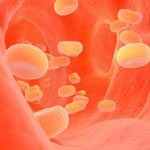 Millions of people with high cholesterol levels are treated with anti-hypolipidemic drugs based on statins that are commonly used to inhibit cholesterol synthesis and lower its serum level. Unfortunately, statins can have two major side effects, although they occur relatively rarely: raised liver enzymes and skeletal muscle pain or even damage. Pharmaceutical research efforts are therefore underway to develop alternative compounds that avoid these potential problems. A promising drug that works via a different mechanism than statin-based drugs, Probucol (PBC), has several advantages over other drugs - better acceptance, ease of administration, and it is much cheaper. Its downside is that its solubility is extremely poor, which considerably lowers its efficiency to suppress cholesterol. A Japanese-U.S. team has now shown that a nanoparticle processing approach enhances the bioavailability of PBC and they demonstrate the design of a solid dosage form for practical use.
Millions of people with high cholesterol levels are treated with anti-hypolipidemic drugs based on statins that are commonly used to inhibit cholesterol synthesis and lower its serum level. Unfortunately, statins can have two major side effects, although they occur relatively rarely: raised liver enzymes and skeletal muscle pain or even damage. Pharmaceutical research efforts are therefore underway to develop alternative compounds that avoid these potential problems. A promising drug that works via a different mechanism than statin-based drugs, Probucol (PBC), has several advantages over other drugs - better acceptance, ease of administration, and it is much cheaper. Its downside is that its solubility is extremely poor, which considerably lowers its efficiency to suppress cholesterol. A Japanese-U.S. team has now shown that a nanoparticle processing approach enhances the bioavailability of PBC and they demonstrate the design of a solid dosage form for practical use.
Mar 31st, 2009
 Much effort has been invested into finding a non-toxic replacement for semiconductor quantum dots (Q-dots) possessing bright fluorescence. Intrinsic toxicity of Q-dots composed of elements such as selenium, tellurium, cadmium, and lead severely hinders their in vivo applications for fluorescent imaging. Therefore many carbon nanomaterials have been considered as a replacement for Q-dots for in vivo imaging. However, it is still unclear how safe carbon nanomaterials are, and this is an obstacle for their use in medicine. Nanodiamond has been an exception among nanomaterials in many aspects, but what is important for biomedical applications is that it has shown very little or zero toxicity in all tests done so far. In addition, nanodiamond powders are already produced by detonation on a large commercial scale. This is why fluorescent nanodiamonds currently attract so much attention.
Much effort has been invested into finding a non-toxic replacement for semiconductor quantum dots (Q-dots) possessing bright fluorescence. Intrinsic toxicity of Q-dots composed of elements such as selenium, tellurium, cadmium, and lead severely hinders their in vivo applications for fluorescent imaging. Therefore many carbon nanomaterials have been considered as a replacement for Q-dots for in vivo imaging. However, it is still unclear how safe carbon nanomaterials are, and this is an obstacle for their use in medicine. Nanodiamond has been an exception among nanomaterials in many aspects, but what is important for biomedical applications is that it has shown very little or zero toxicity in all tests done so far. In addition, nanodiamond powders are already produced by detonation on a large commercial scale. This is why fluorescent nanodiamonds currently attract so much attention.
Mar 30th, 2009
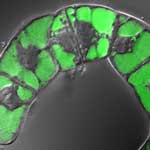 Carbon nanotubes (CNTs) have already been explored as drug carriers into mammalian cells. Compared to nanoparticles, CNTs have a larger inner volume which allows more drug molecules to be encapsulated, and this volume is more easily accessible because the end caps can be easily removed, and they have distinct inner and outer surfaces for functionalization. In addition to nanomedicine applications, plant science research focusing on investigation of plant genomics and gene function as well as improvement of crop species has become a nanotechnology frontier. To what degree nanomaterials can be employed in delivering payloads into plant cells is a subject that has not yet been explored very well although there appears to be demand from plant cell biologists to take advantage of nanomaterials.
Carbon nanotubes (CNTs) have already been explored as drug carriers into mammalian cells. Compared to nanoparticles, CNTs have a larger inner volume which allows more drug molecules to be encapsulated, and this volume is more easily accessible because the end caps can be easily removed, and they have distinct inner and outer surfaces for functionalization. In addition to nanomedicine applications, plant science research focusing on investigation of plant genomics and gene function as well as improvement of crop species has become a nanotechnology frontier. To what degree nanomaterials can be employed in delivering payloads into plant cells is a subject that has not yet been explored very well although there appears to be demand from plant cell biologists to take advantage of nanomaterials.
Mar 27th, 2009
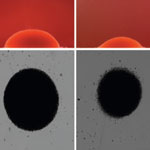 The future of tissue and cell engineering depends on the development of next-generation biomaterials that have full control over cell attachment and development into tissue. Since surface topography influences many aspects of cellular and molecular responses, surfaces of implanted devices for instance will one day be engineered to the desired cell shape and cell responses at the point of implantation. The usual techniques of cell patterning are based on passive methods where the intrinsic adhesive properties of the cell are exploited. By creating substrates presenting different areas with particular adhesive characteristics, one can segregate cells on the substrate plane. The main drawback of these techniques is their irreversibility since the differential adhesiveness is permanent. Researchers in France have investigated a new direction for three-dimensional cell patterning that could find applications in tissue engineering. Rather than relying on substrate chemical or physical modifications, they perform the cell patterning using external magnetic forces with which they control the organization of cells on a substrate and create a 3D multicellular assembly.
The future of tissue and cell engineering depends on the development of next-generation biomaterials that have full control over cell attachment and development into tissue. Since surface topography influences many aspects of cellular and molecular responses, surfaces of implanted devices for instance will one day be engineered to the desired cell shape and cell responses at the point of implantation. The usual techniques of cell patterning are based on passive methods where the intrinsic adhesive properties of the cell are exploited. By creating substrates presenting different areas with particular adhesive characteristics, one can segregate cells on the substrate plane. The main drawback of these techniques is their irreversibility since the differential adhesiveness is permanent. Researchers in France have investigated a new direction for three-dimensional cell patterning that could find applications in tissue engineering. Rather than relying on substrate chemical or physical modifications, they perform the cell patterning using external magnetic forces with which they control the organization of cells on a substrate and create a 3D multicellular assembly.
Mar 26th, 2009
 Over the past few years, scientists have taken advantage of the unique optical and other physical properties of metal nanoparticles to create a wide range of nanotechnology probes for electronic, optical, and microgravimetric transduction of different biomolecular recognition events. An interesting approach that was reported a couple of years ago deals with a technique that estimates the antioxidant power of certain food samples by measuring the generation and growth of gold nanoparticles. Researchers have built on these findings by developing a novel optical nanoprobe that can analyze the total reducing sugar content of samples. This technique could lead to the development of inexpensive and disposable optical nanoprobes that could find applications in a host of industrial, biomedical and clinical fields.
Over the past few years, scientists have taken advantage of the unique optical and other physical properties of metal nanoparticles to create a wide range of nanotechnology probes for electronic, optical, and microgravimetric transduction of different biomolecular recognition events. An interesting approach that was reported a couple of years ago deals with a technique that estimates the antioxidant power of certain food samples by measuring the generation and growth of gold nanoparticles. Researchers have built on these findings by developing a novel optical nanoprobe that can analyze the total reducing sugar content of samples. This technique could lead to the development of inexpensive and disposable optical nanoprobes that could find applications in a host of industrial, biomedical and clinical fields.
Mar 24th, 2009
 Carbon nanotubes possess physicochemical properties that make them an attractive possibility for nuclear waste management, especially when compared to the current tools involving activated carbon. In the environmental field, carbon nanotubes application is regarded as extremely promising for the development of novel energy-storage techniques, sensors, and sorbent materials for myriad uses including waste management. A group of European scientists want to stimulate a discussion on how the potential of carbon nanomaterials for nuclear waste mangement could be realized. They argue that the significance of the possible role of carbon nanotubes in treating and sequestering nuclear waste stems from a number of recent research results that specifically investigate the interaction between CNTs and actinides or lanthanides.
Carbon nanotubes possess physicochemical properties that make them an attractive possibility for nuclear waste management, especially when compared to the current tools involving activated carbon. In the environmental field, carbon nanotubes application is regarded as extremely promising for the development of novel energy-storage techniques, sensors, and sorbent materials for myriad uses including waste management. A group of European scientists want to stimulate a discussion on how the potential of carbon nanomaterials for nuclear waste mangement could be realized. They argue that the significance of the possible role of carbon nanotubes in treating and sequestering nuclear waste stems from a number of recent research results that specifically investigate the interaction between CNTs and actinides or lanthanides.
Mar 23rd, 2009
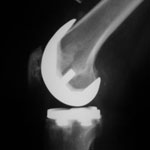 Ever since doctors started replacing worn or damaged bones and teeth with plastic, metal, or ceramic parts, scientists have been on a quest to develop the perfect material for these orthopedic and dental implants. Initially, the challenge was to overcome the body's response to foreign materials, i.e. the strong tendency to reject them. While a lot of progress has been made, and millions of patients receive implants every year ranging from teeth to hip joints, medical implants still do not achieve the same fit and stability as the original tissue that they replace. Researchers have found that the response of host organisms to nanomaterials is different than that observed to conventional materials and that nanopatterning of the surface of implant materials therefore leads to much more compatible prostheses. One approach to improving the biological performance of implants is by functionalizing a non-physiological metallic implant surface through the application of biologically active coatings. Researchers in The Netherlands are now proposing a simple and cost-effective alternative to traditional biomedical coatings for bone implants.
Ever since doctors started replacing worn or damaged bones and teeth with plastic, metal, or ceramic parts, scientists have been on a quest to develop the perfect material for these orthopedic and dental implants. Initially, the challenge was to overcome the body's response to foreign materials, i.e. the strong tendency to reject them. While a lot of progress has been made, and millions of patients receive implants every year ranging from teeth to hip joints, medical implants still do not achieve the same fit and stability as the original tissue that they replace. Researchers have found that the response of host organisms to nanomaterials is different than that observed to conventional materials and that nanopatterning of the surface of implant materials therefore leads to much more compatible prostheses. One approach to improving the biological performance of implants is by functionalizing a non-physiological metallic implant surface through the application of biologically active coatings. Researchers in The Netherlands are now proposing a simple and cost-effective alternative to traditional biomedical coatings for bone implants.
Mar 18th, 2009
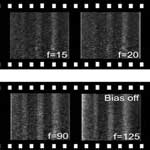 For the past 20+ years, the atomic force microscope has been one of the most important tools to visualize nanoscale objects where conventional optics cannot resolve them due to the wave nature of light. One limiting factor of conventional AFM operation is the speed at which images can be acquired. Over the past five years, researchers have been developing a high-speed AFM capable of video-rate image capture. An AFM with this ability enables nanoscale processes to be observed in real-time, rather than capturing only snap-shots in time. An obvious application of this instrument is to modify the sample surface while observing changes in the surface topography. Successful demonstration of this would indicate the potential for a new generation of fabrication tools. Scientists have now done exactly that.
For the past 20+ years, the atomic force microscope has been one of the most important tools to visualize nanoscale objects where conventional optics cannot resolve them due to the wave nature of light. One limiting factor of conventional AFM operation is the speed at which images can be acquired. Over the past five years, researchers have been developing a high-speed AFM capable of video-rate image capture. An AFM with this ability enables nanoscale processes to be observed in real-time, rather than capturing only snap-shots in time. An obvious application of this instrument is to modify the sample surface while observing changes in the surface topography. Successful demonstration of this would indicate the potential for a new generation of fabrication tools. Scientists have now done exactly that.
Mar 16th, 2009
 Millions of people with high cholesterol levels are treated with anti-hypolipidemic drugs based on statins that are commonly used to inhibit cholesterol synthesis and lower its serum level. Unfortunately, statins can have two major side effects, although they occur relatively rarely: raised liver enzymes and skeletal muscle pain or even damage. Pharmaceutical research efforts are therefore underway to develop alternative compounds that avoid these potential problems. A promising drug that works via a different mechanism than statin-based drugs, Probucol (PBC), has several advantages over other drugs - better acceptance, ease of administration, and it is much cheaper. Its downside is that its solubility is extremely poor, which considerably lowers its efficiency to suppress cholesterol. A Japanese-U.S. team has now shown that a nanoparticle processing approach enhances the bioavailability of PBC and they demonstrate the design of a solid dosage form for practical use.
Millions of people with high cholesterol levels are treated with anti-hypolipidemic drugs based on statins that are commonly used to inhibit cholesterol synthesis and lower its serum level. Unfortunately, statins can have two major side effects, although they occur relatively rarely: raised liver enzymes and skeletal muscle pain or even damage. Pharmaceutical research efforts are therefore underway to develop alternative compounds that avoid these potential problems. A promising drug that works via a different mechanism than statin-based drugs, Probucol (PBC), has several advantages over other drugs - better acceptance, ease of administration, and it is much cheaper. Its downside is that its solubility is extremely poor, which considerably lowers its efficiency to suppress cholesterol. A Japanese-U.S. team has now shown that a nanoparticle processing approach enhances the bioavailability of PBC and they demonstrate the design of a solid dosage form for practical use.
 Subscribe to our Nanotechnology Spotlight feed
Subscribe to our Nanotechnology Spotlight feed





